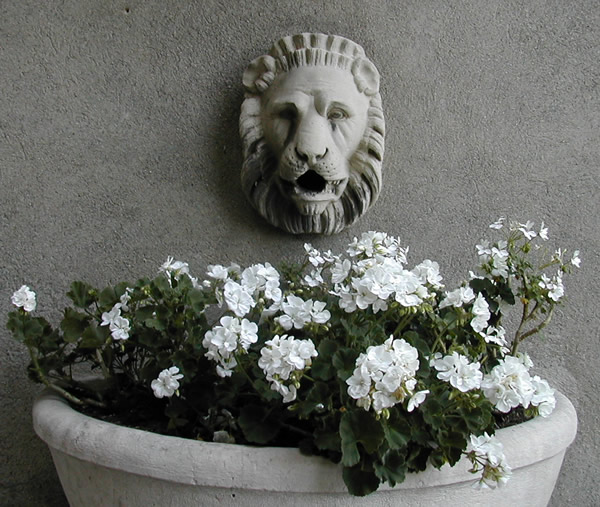Italy, like England, has its share of stately homes, and of owners who can’t afford to maintain them. So some clever person came up with the idea to open to the public some of the historic villas of Bergamo, for a limited time. None of these places is so amazing as to entice a regular flow of visitors, but the three (out of a possible five) that we saw were interesting enough to merit a Sunday afternoon visit.
The noble families who built, decorated, and redecorated these places were not among Italy’s most famous (and famously wealthy) families; their funds often ran short of their ambitions. At Palazzo Terzi, we were invited to admire the imposing fireplace in the main reception room. About four meters high, it featured huge stone lions supporting a massive mantel, surmounted by a shield flanked by female figures. The guide helpfully pointed out that the bottom section was marble, but the top was of molded and carved plaster: “You’d never notice the difference, except that the plaster is cracked in places.”
All three villas were richly decorated with paintings on the walls and ceilings, often with clever tromp l’oeil effects, to make ceilings look higher and walls more intricate than they really are. Palazzo Moroni’s decoration includes a series of allegorical paintings illustrating the virtues a noble family should have, as dictated by a local bishop: antiquity, riches, dignity, valor, knowledge, nobility of blood and heart, sanctity, courage, and luck. The Moroni family crest features the mulberry tree, because the family had made its money (and consequently been raised to nobility) growing silkworms for the Italian silk industry.
Palazzo Moroni also houses a well-known painting, The Knight in Pink, by Giovan Battista Moroni. The guide pointed out that the painting includes a Latin tag which translates as: “Better the second than the first.” No one is sure whether this refers to the knight’s wives, or life experiences in general.
A tomb in Casa Palma Camozzi Vertova gave pause for reflection. “This tomb contains a certain de Augustis, buried in the 15th century” explained the guide (as we could also see from the inscription). “No one knows who he was.” So much for carving your name in marble for posterity.
photo at top: courtyard of Palazzo Terzi
